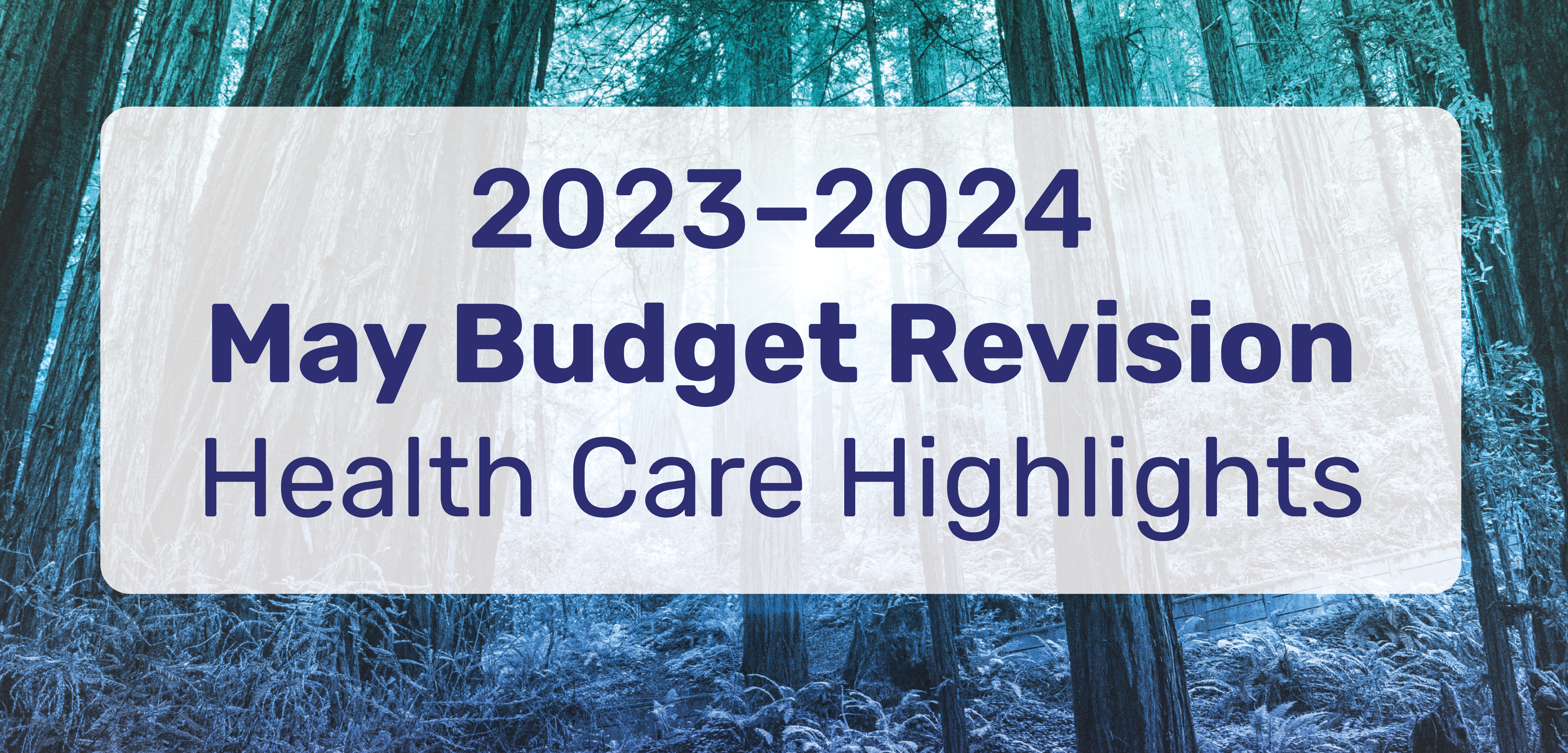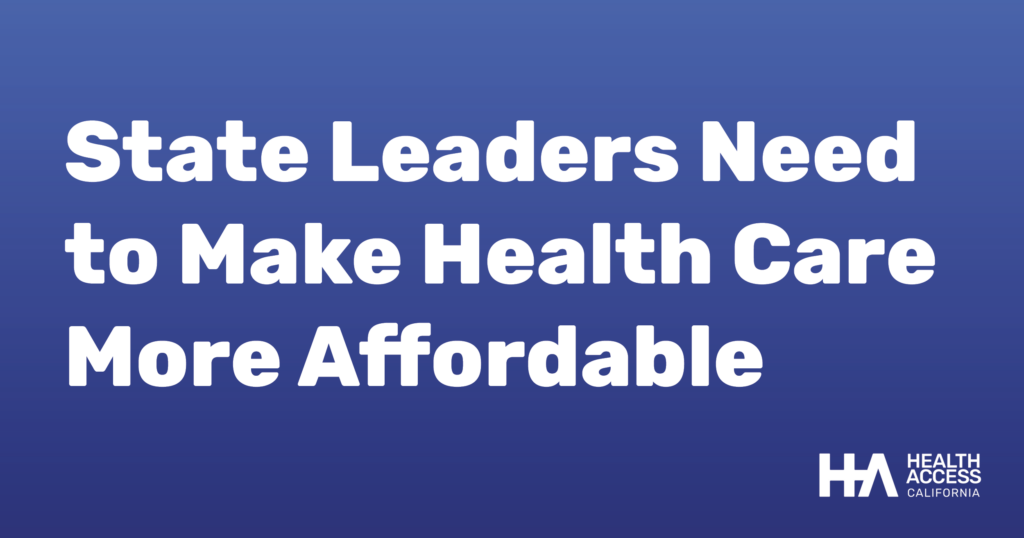- The May revision to the 2023-2024 state budget announced today by Governor Gavin Newsom continues key commitments to improve and expand health care, including removing barriers in Medi-Cal for all income-eligible Californians regardless of immigration status by January 2024, and improvements to CalAIM.
- A bigger “MCO tax” would provide more federal funds for new investments in Medi-Cal.
- The May revision still seeks to sweep money from Covered California’s affordability fund through 2025, redirecting the $333 million/year raised by the individual mandate penalty into the General Fund. Health advocates urge the Governor to align with the plan from the Senate Democrats to keep that money in health care, and eliminate deductibles and lower co-pays for most Covered California enrollees.
SACRAMENTO, CA – Today Governor Gavin Newsom released the updated May revision to his proposed 2023-24 state budget. The proposal is similar for health care to the plan outlined in January, particularly in the re-commitment to remove all barriers in Medi-Cal for income-eligible Californians, regardless of immigration status, beginning in January 2024. Other key Medi-Cal investments were maintained including improvements to CalAIM, reproductive health, and mental health care—in part by partially drawing down on the state’s safety net reserve fund. The May revision also includes a bigger managed care organization (MCO) tax to draw down more federal dollars, which enables the potential of new investments to improve Medi-Cal reimbursement rates for providers.
Health advocates were again disappointed to see the Governor’s budget unchanged on improving health coverage affordability for nearly a million Californians who purchase their coverage through Covered California. The May revision still includes a claw-back of $333 million meant for the Covered California affordability fund and raised from the individual mandate tax penalty. Legislators have advocated that these funds should be used to help eliminate deductibles and lower co-pays in Covered California, not be diverted into the General Fund.
“We appreciate the continued commitment to improving and expanding Medi-Cal, a lifeline for 15 million Californians, over a third of the state, and the opportunity to work with the federal government to make new investments to improve access. As Californians experience more economic instability, we must do everything we can to ensure that health care coverage remains accessible in Medi-Cal as well as Covered California,” said Anthony Wright, executive director of Health Access California, the statewide health care advocacy coalition. “The legislature should reject the Covered California claw-back and ensure that the hundreds of millions raised in the Health Care Affordability Reserve Fund from those without coverage goes directly to lowering costs that may be preventing Californians from purchasing or accessing care in the first place.”
A recent report from the California Budget and Policy Center found that nearly 2 in 5 households who reported that they owed the penalty for tax year 2020 had incomes at or below 266% of the federal poverty level (FPL). These are the exact people that would be helped to enroll in coverage if out-of-pocket costs were reduced. The report also states that California is expected to have raised a total of $1.4 billion in individual mandate penalty revenue from 2020 through 2024. However, “none of these dollars have been specifically budgeted to reduce the cost of insurance purchased through Covered California.”
Last month, California Senate Democrats released a budget plan that would end the diversion of mandate penalty funds away from its intended use to lower costs of Covered California plans. The Senate Democrats plan will increase subsides on January 1, 2024 in order to reach the goal of eliminating health care deductibles and reduce copays for 900,000 Californians.
“We shouldn’t hold back any funds that could help Californians access and afford health care now,” said Diana Douglas, policy director for Health Access California. “We urge the legislature to prioritize this effort in their budget negotiations with the Governor and provide needed health care cost relief for nearly a million Californians in Covered California.”
Beyond the continued commitments in Medi-Cal, and the sweeping of the funds in Covered California, other health care items that remain included in the May budget revision include:
- Increased funding for CalRx to manufacture a generic for Naloxone and purchase Mifepriston or Misoprostol
- A distressed hospital loan program, which was in a bill already passed and on the Governor’s desk.
- A multifaceted Behavioral Health Modernization proposal.
Beyond the MCO tax, which would be in partnership with the managed care organization, the Governor did not support any new tax or revenues.
“We do hope the Governor reconsiders looking at revenue solutions to ensure all California corporations pay their fair share which would allow California to make needed investments in health care access and affordability,” said Wright. “Revenues should be part of the way we weather the economic uncertainties, both for the state and for Californians having to pay for care and coverage and other needs.”
Additional Reading:
CalMatters: Newsom breaks deal to lower price of Covered California. Lawmakers move to hold him to it (May 4, 2023)
KHN: California Stockpiles Penalties from Uninsured Residents Instead of Lowering Care Costs (November 10, 2022)
###
View this post on Instagram

